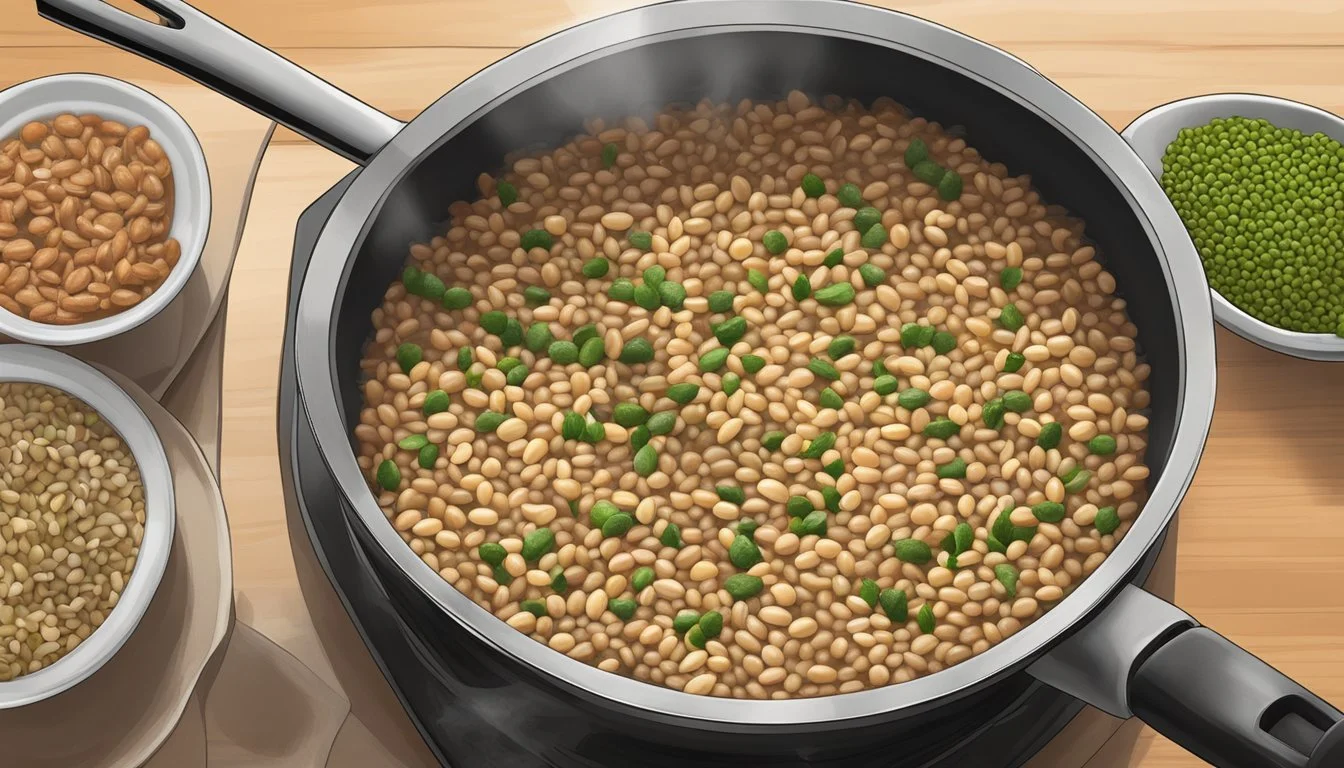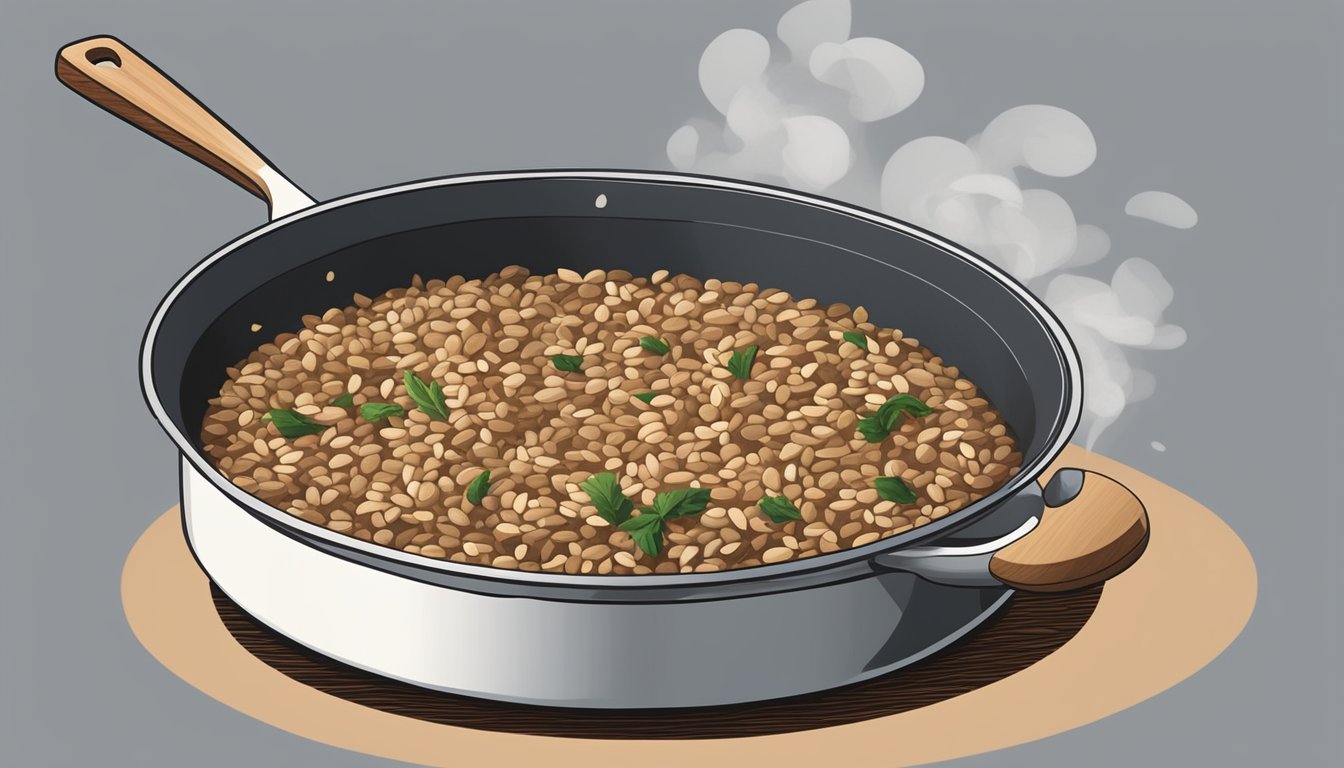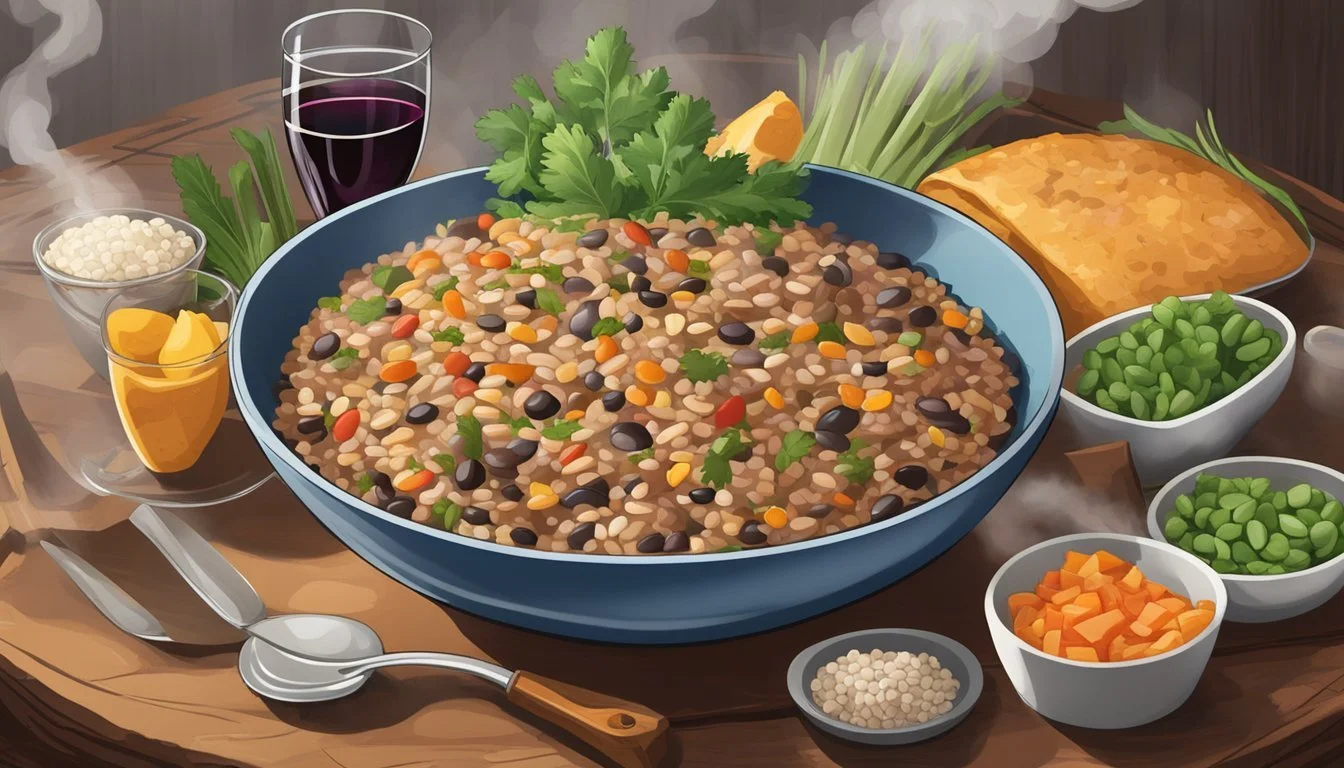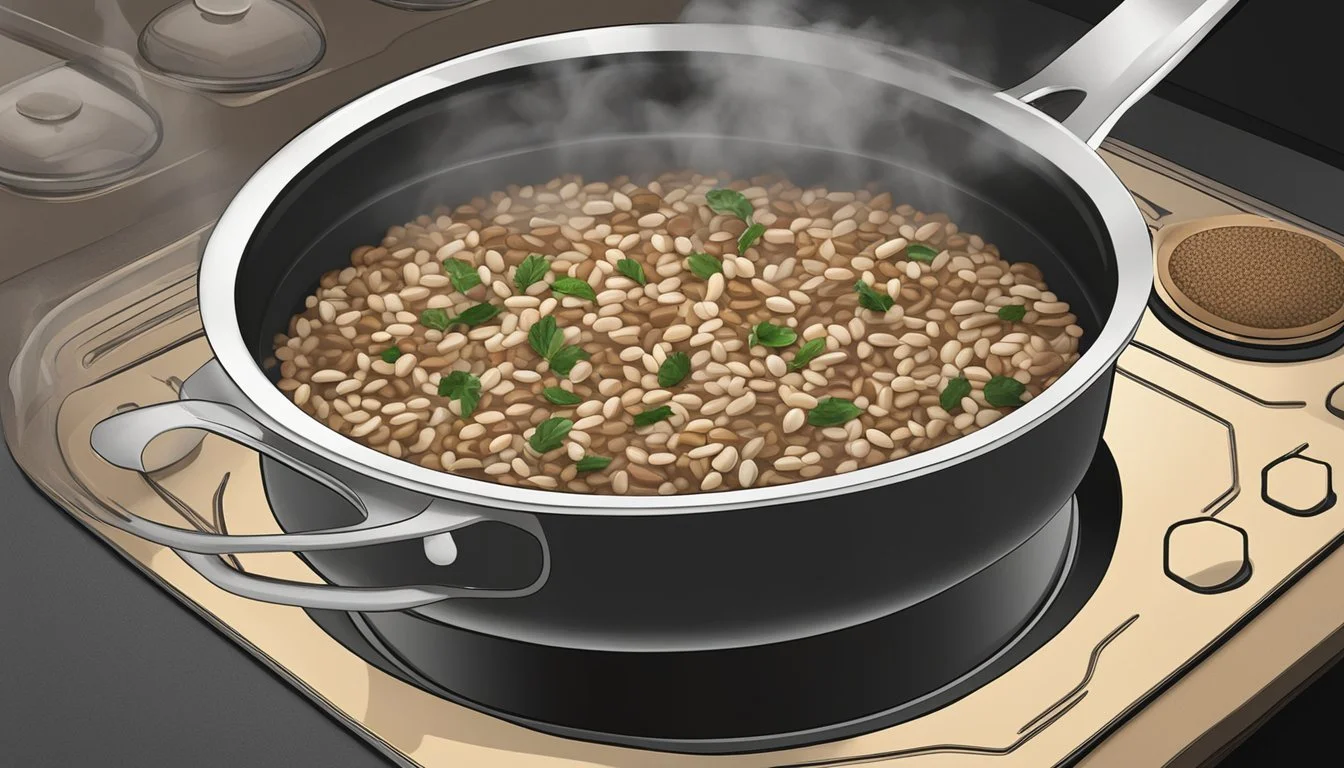Best Way to Reheat Hoppin' John
Tips for Preserving Its Hearty Texture
Hoppin' John, a Southern staple steeped in tradition, embodies more than just the savory flavors of the American South; it carries with it a legacy of good luck, especially when served on New Year’s Day. Comprising of black-eyed peas, rice, and often accompanied by greens and ham or bacon, this hearty dish is a testament to the resourcefulness and culinary creativity of Southern cooks. Ensuring this dish retains its textural integrity upon reheating is crucial to enjoying its comforting qualities, just as it's savored when freshly made.
Discovering the best way to reheat Hoppin' John while maintaining its hearty texture involves understanding the components that make up this dish. Black-eyed peas tend to absorb flavors over time, which can enhance the dish's taste, but also pose a risk of becoming mushy if not reheated properly. Rice, another core ingredient, has an optimal fluffiness that is essential to the overall mouthfeel of the dish. The aim is to restore Hoppin' John to its original glory without compromising on taste or texture.
Adhering to specific reheating techniques ensures that Hoppin' John remains a symbol of luck and prosperity for those who partake in it beyond the festive beginning of the year. Whether enjoying it as a comforting meal or serving it as a tradition to guests, the method of reheating can make a significant difference. By following the guidelines for proper reheating, this Southern favorite is preserved, ensuring each bite is as flavorful and satisfying as when it was first prepared.
Understanding Hoppin' John
Hoppin' John, a traditional Southern dish originating from South Carolina, is revered for its rich cultural heritage and savory blend of rice and black-eyed peas. One can trace its roots back to West African cuisine with influences from French and Cajun cooking.
Historical Significance
Hoppin' John holds an esteemed place in Southern culinary tradition, symbolizing prosperity and good fortune for the New Year when served with greens and cornbread. The dish dates back to the antebellum South, where it was commonly made with Carolina Gold rice, a prized crop of South Carolina, and field peas or black-eyed peas, which are deemed to bring luck.
Key Ingredients
The core components of Hoppin' John include:
Rice: Often Carolina Gold rice, revered for its quality and flavor.
Black-eyed Peas: The star of the dish, representing coins and prosperity.
Pork: Traditionally bacon or ham hock is incorporated for richness.
Seasonings: Including onions, garlic, and peppers to add depth.
The blend of smoky pork with starchy beans and rice creates a hearty, comforting meal that is both nourishing and fulfilling.
Variations and Regional Differences
While traditional Hoppin' John features Carolina peas and rice, many variations exist:
The Lowcountry version may include fresh, local ingredients like shrimp.
In Cajun cuisine, a spicier iteration called "Cajun Hoppin' John" uses andouille sausage.
Some variations replace black-eyed peas with other beans such as red field peas or crowder peas.
Despite its regional adaptations, the essence of Hoppin' John remains consistent—a beloved Southern dish interwoven with tradition and taste.
Preparation Fundamentals
Before reheating Hoppin' John, it's crucial to understand that the texture and flavor hinge on the initial preparation. Proper selection of rice, pre-soaking of black-eyed peas, and a harmonious balance of flavors will establish a foundation for a reheated dish that retains its hearty character.
Selecting the Right Rice
When choosing rice for Hoppin' John, long-grain rice provides a fluffy texture, while Carolina Gold rice offers a distinct creamy quality. These varieties ensure the dish remains hearty and not mushy upon reheating.
Long-grain rice: Ideal for a non-sticky outcome.
Carolina Gold rice: Heritage variety known for exceptional taste.
Soaking Black-Eyed Peas
Soaking dried black-eyed peas is a critical step to attain the right texture. Soaking them overnight will soften the peas, allowing them to cook more evenly and maintain their integrity during reheating later.
Soak duration: Overnight or at least 12 hours.
After soaking: Rinse the peas to remove any impurities.
Balancing Flavors and Spices
A careful blend of seasonings and fresh ingredients creates the rich flavor profile of Hoppin' John. Celery, garlic, olive oil, bell pepper, and onion form the aromatic base, while salt, cayenne pepper, bay leaf, and other spices round out the flavor.
Salt: A critical seasoning to enhance all other flavors.
Cayenne pepper: Adds a subtle heat; adjust according to preference.
Bay leaf: Contributes a unique fragrance and complexity.
By paying attention to these fundamentals during preparation, you will ensure that your Hoppin' John retains its intended texture and deep flavors when reheated.
Cooking Techniques
When reheating Hoppin' John, the goal is to maintain its hearty texture and rich flavor. Different techniques can affect the outcome, so choosing the right one is crucial for the best results.
Stovetop Methods
The stovetop offers a quick and controlled reheating method. Users should first place Hoppin' John in a saucepan and add a small amount of water or broth to prevent drying out. They ought to gently simmer the dish over medium heat, stirring occasionally, until it is thoroughly warmed. This method takes approximately 10 minutes and is ideal for preserving the textures of celery and bell peppers.
Using a Dutch Oven
For larger batches, a Dutch oven provides even heat distribution. To reheat, cooks should lightly coat the Dutch oven with olive oil and add the Hoppin' John. They need to cover and heat over a low flame, stirring periodically. This technique ensures that ingredients like collard greens and ham hock infuse the dish with flavor during the reheating process, which usually lasts around 15-20 minutes.
Slow Cooking Variations
To reheat without rush, a slow cooker can be utilized. This involves placing the Hoppin' John in the cooker and setting it to low. It's advisable to add a bit of liquid to keep the dish moist. The Hoppin' John will gradually reheat over a couple of hours, allowing southern or cajun seasoning to meld with ingredients like smoked turkey or ham, enhancing the overall profile of the dish.
Reheating Techniques
Proper reheating methods are vital for keeping the texture and flavor of Hoppin' John intact. These specific techniques aim to warm the dish thoroughly while preserving its moisture and hearty texture.
Stovetop Reheating
For stovetop reheating, a consistent low heat method is key to maintain the quality of rice and vegetables. One should start by placing the Hoppin' John in a saucepan along with a splash of water or broth to replenish lost moisture. Covering with a lid ensures that steam circulates, gently warming up the leftovers without drying them out. It's important to stir occasionally to avoid sticking and achieve even heating. This technique is particularly good at preserving the firmness of the rice grains and keeping the vegetables crisp.
Microwave Method
When in a hurry, the microwave offers a quick alternative. Place the Hoppin' John in an airtight microwave-safe container to help retain moisture. Adding a damp paper towel on top of the container before microwave can also assist in keeping the dish moist. Heat in short intervals of 30 seconds, stirring in between to distribute heat evenly and prevent the greens from wilting. Microwaving can slightly alter the texture but is efficient for a speedy reheating.
Oven Warming Tips
Oven warming is ideal for larger quantities, and can gently reheat the dish to retain its hearty qualities. Preheat the oven to 350°F, and place the Hoppin' John in an oven-safe dish, covered with foil. The foil helps trap in moisture, and prevent the rice and vegetables from drying out. After about 20 minutes, check if it's thoroughly warmed. Oven warming takes longer but can enhance the flavors and preserve the intended texture of the dish.
Proper Storage Solutions
To ensure Hoppin' John maintains its hearty texture and flavor after reheating, storing it properly is crucial. Different storage methods can be employed depending on how soon you plan to consume the leftovers.
Refrigerator Storage
Storing Hoppin' John in the refrigerator is ideal for short-term preservation, typically for 3 to 5 days. The key is to use an airtight container to avoid exposure to air and moisture, which can spoil the texture and flavor of the dish. Ingredients like onions, garlic, and peppers should be sealed well to maintain their robustness.
Steps:
Allow the dish to cool to room temperature.
Transfer to an airtight container.
Place in the fridge.
Freezing for Longevity
For long-term storage, Hoppin' John can be frozen for up to three months. Freezing works well to preserve the dish's hearty ingredients, including any greens mixed in. However, one should be attentive to the moisture content as it can impact the texture upon reheating.
Procedure:
Divide the leftovers into portion-sized airtight containers or freezer bags.
Label each container with the date to track how long it has been stored.
Lay bags flat in the freezer to save space and allow for an even freeze.
Preventing Flavor Loss
Flavor retention is as important as texture when reheating Hoppin' John. An airtight container is crucial for protecting it from taking on other flavors from the fridge or freezer. Additionally, ensure that the dish is reheated gently to prevent drying out, which can dull flavors.
Tips:
Use heavy-duty foil or freezer wrap along with airtight containers for an added layer of flavor protection.
Thaw frozen Hoppin' John in the fridge for 24 hours before reheating to maintain flavor and texture.
Health Benefits and Nutritional Value
The nutritional profile of Hoppin' John centers around its high dietary fiber and plant-based protein content, as well as being mindful of caloric intake. This traditional dish, typically made with black-eyed peas, rice, and a mixture of vegetables, can be a healthful and nourishing option, particularly when ingredients are chosen carefully.
Dietary Fiber Content
Hoppin' John is rich in dietary fiber, largely due to its black-eyed peas and vegetable components. Dietary fiber is essential for digestive health and can help in regulating blood sugar levels.
Black-eyed peas: A single cup contains approximately 11 grams of fiber.
Vegetables: Common vegetables include onions, celery, and bell peppers, adding to the fiber content.
Caloric Considerations
While Hoppin' John can be energy-dense, the dish’s caloric content depends on the preparation method and ingredients used.
Rice and beans: The combination provides a sustaining energy source.
Cooking method: Using low-fat methods, such as sautéing veggies in minimal oil or baking, can help manage calories.
Plant-Based Protein
This dish is an excellent source of plant-based protein, making it a good option for those following a vegan or vegetarian diet.
Beans: Black-eyed peas offer around 13 grams of protein per cup.
Whole grains: Pairing beans with rice provides all essential amino acids.
By selecting whole-grain rice and incorporating a variety of vegetables, Hoppin' John can serve as a balanced meal option, promoting health and well-being.
Serving Suggestions and Pairings
To elevate the experience of enjoying Hoppin' John, incorporating the right accompaniments and beverages is crucial. They should complement the flavors and add texture, making it a complete meal.
Traditional Accompaniments
Cornbread: A slice of warm, buttery cornbread pairs well with the soft texture of Hoppin’ John and adds a slight sweetness.
Collard Greens: Braised collard greens with bacon or ham hock offer a smoky bitterness that complements the creamy peas and rice.
Tomato Salad: Fresh tomato salad with herbs provides acidity and a refreshing contrast to the hearty main dish.
Contemporary Sides
Roasted Peppers: Colorful and charred, roasted peppers bring a modern twist with their smokiness and sweetness.
Sautéed Greens: Quick-sautéed greens like kale or spinach with garlic add a vibrant and healthy edge to the rich flavors.
Grilled Sausage: For a hearty addition, a spicy sausage grilled to perfection introduces a savory and meaty component.
Wine and Beverage Pairings
White Wine: A crisp Sauvignon Blanc or Chardonnay can cut through the richness of the dish with its acidity.
Red Wine: A lighter-bodied red wine like Pinot Noir complements the savory elements without overwhelming the taste.
Beer: A malty amber ale balances the spiciness and the earthy flavors in the Hoppin' John.
Advanced Tips and Tricks
To elevate the classic Hoppin' John dish, readers should explore refining the base recipe, incorporating seasonal serving variations, and adapting it for vegan preferences while maintaining the dish's cherished texture and flavor.
Enhancing the Base Recipe
A robust Hoppin' John starts with a solid foundation. Cooks should consider using Carolina Gold or another variety of long-grain rice for its ability to maintain firmness when reheated. For the base, sauté onions, bell peppers, and celery in bacon drippings or olive oil to develop a deep layer of flavor. When it comes to seasonings, a blend of fresh herbs and Cajun spices can transform the dish, infusing it with aromatic complexity.
Seasonal Serving Ideas
Seasonal twists can keep Hoppin' John fresh and exciting throughout the year. In summer, adding ripe, diced tomatoes can introduce a vibrant, tangy element. During New Year’s Day celebrations, incorporating black-eyed peas is a traditional choice believed to bring good fortune. To enhance winter servings, one might stir a rich gravy into the rice or top it with a runny-yolked egg for added richness.
Making Hoppin' John Vegan-Friendly
For a vegan version of this hearty dish that doesn't compromise on flavor, cooks can use vegetable broth and replace traditional pork with mushrooms or smoked tofu for umami depth. Adding a dash of liquid smoke can also mimic the traditional smoky taste. It's important to ensure that all other ingredients, such as seasonings and rice, are free of animal products. Vegan variations can be as flavorful and satisfying as the original, making Hoppin' John accessible to all dietary preferences.








